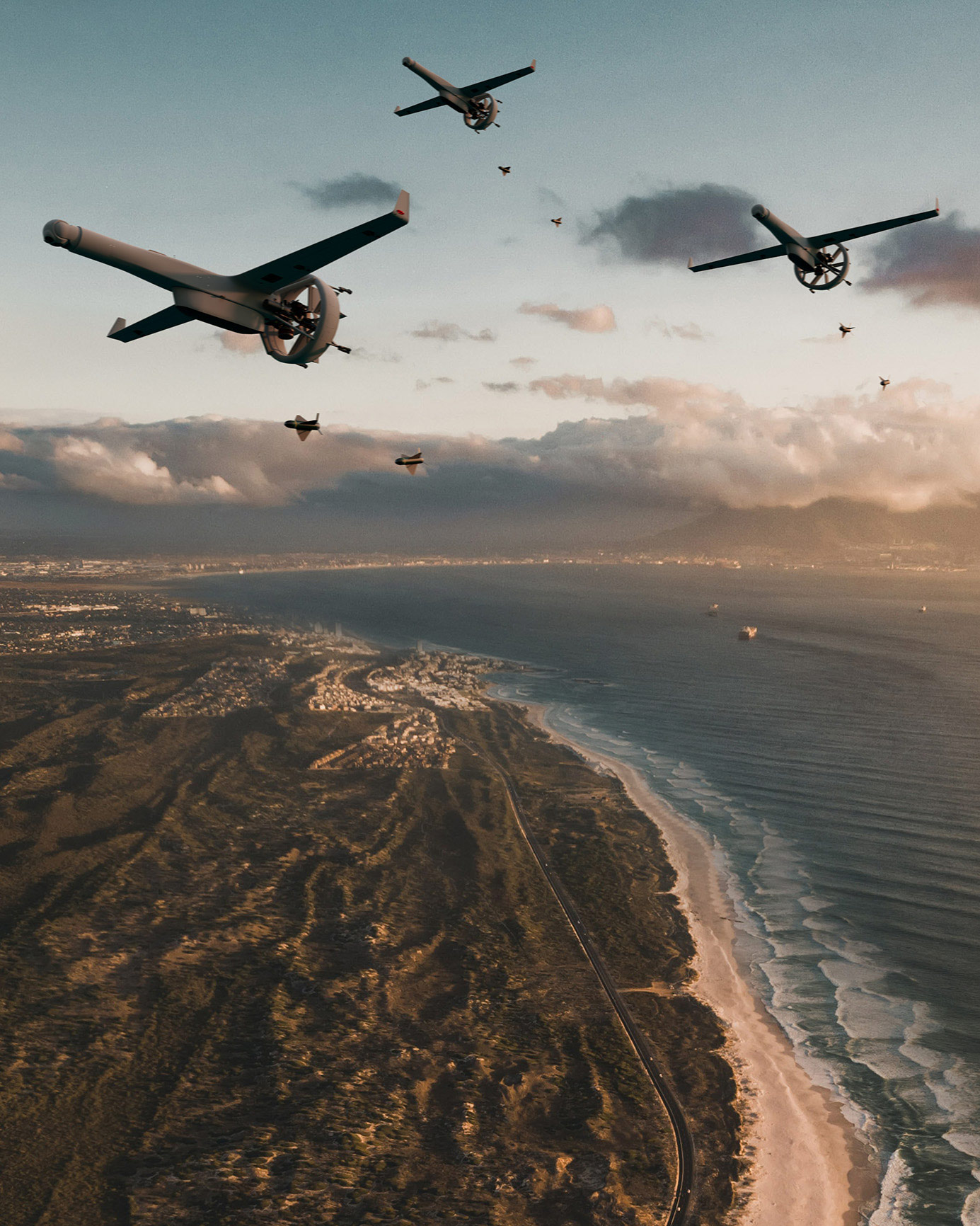Hatchet: Arming Unmanned Aircraft to Strike as Well as See

Hatchet: Arming Unmanned Aircraft to Strike as Well as See
Unmanned Aircraft Systems (UAS) have proven invaluable to warfighters, delivering persistent situational awareness that makes teams in the field more effective and better protected. Now, Northrop Grumman is showing how even the smaller categories of UAS can be armed with next-generation capabilities to both see threats and defeat them.
Hatchet Integration
In a recent miniature munition drop exercise earlier this month, Northrop Grumman’s Hatchet – a six-pound, precision miniature strike munition with a compressed carriage design – was integrated onto the V-BAT, a vertical take-off and landing (VTOL) Group 3 UAS designed and manufactured by Shield AI.
“Group 3 UAS, such as V-BAT, have traditionally been used for intelligence, surveillance, and reconnaissance (ISR) missions. Hatchet’s integration brings precision kinetic strike capability to unmanned aerial vehicles (UAVs), giving ground maneuver forces the ability to find and defeat threats,” said Joe Esler, Combat Systems business development for Northrop Grumman.

Hatchet, which uses GPS/INS midcourse guidance and semi-active laser terminal guidance, hit dead center of the laser target coming from a sister V-BAT.
This most recent test adds to the multiple successful deployments of Hatchet from various UAS’s, proving the munition is platform-agnostic while retaining accuracy of within two meters. Hatchet was integrated aboard another Group 3 UAS for a demonstration during an exercise last fall.
The Naval Surface Warfare Center, Dahlgren Division’s Battle Management System (BMS) operated as the interface between the aircraft, weapon, and ground control station (GCS) providing Hatchet critical targeting information during both live drop tests involving Hatchet. This BMS inputs the coordinates to the Hatchet’s GPS system, sets the fuse parameters, and releases Hatchet from the UAV.
Photo Caption: Future Concept - AI-enabled V-BATs conducting intelligent teaming in a data degraded environment - supporting targeting, maneuver, and delivery of munitions like Hatchet, a six-pound, precision miniature strike munition.
Digital rendering credit: Shield AI
What's Next:
“We have increased our production capacity, inserted cost reduction efforts, and are preparing Hatchet inventory to meet growing DoD and International demands” said Grant McCall, Air-Delivered Portfolio Lead for Northrop Grumman.
Additionally, the next phase of Hatchet innovation is already underway to address advanced miniature precision guided munition emerging requirements. The future of Hatchet will include armor piercing, networked, collaborative, and autonomous capabilities to further advance mission effectiveness.
“Hatchet’s capabilities increase future mission readiness,” Esler said. “We are increasing decision advantage and advancing next-generation overhead reconnaissance capability in the future battlespace.”
Media Contact
Linzee Burch
480-349-2097